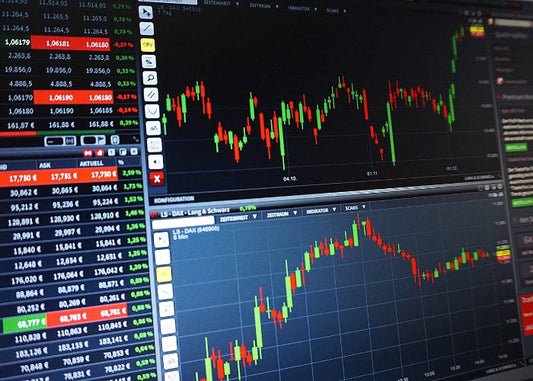Trive Bearish on EUR/AUD

Given the softer economic conditions, any lower-than-expected figures from Q2 GDP and July inflation could drag the EUR further. In contrast, with the stronger-than-expected Australian Monthly CPI, Wednesday's Q2 CPI will be important to determine RBA’s August action, and the inflation risk remain to upside.
EUR: Watching policy, focused on growth.
According to the ECB's July meeting, President Lagarde highlighted downside risks to economic growth, noting it was lower than in Q1. Recent eurozone economic data supports this, with the composite PMI dropping to 50.1 in July from 50.9 in June, and both manufacturing and services PMIs falling short of market expectations. Additionally, Germany's economy showed signs of weakness in July, with both services and manufacturing sectors underperforming. The HCOB Flash Germany Composite PMI fell to 48.7 from 50.4 in June, marking a four-month low and indicating a contraction in overall economic activity. The services PMI declined to 52.0 from 53.1, while the manufacturing PMI dropped to 42.6 from 43.5, the lowest in three months. Furthermore, the German ifo Business Climate index highlighted ongoing challenges, with weaker business conditions and a deteriorating outlook.
Given the softer economic conditions, there is a strong argument for a potential rate cut by the European Central Bank in September. In the near term, focus will be on the flash HICP inflation estimate for July and advanced Q2 GDP data from the Eurozone. Markets expect headline inflation to recover to 2.6% y/y from 2.5% previously, while the core print should remain stable at 2.9% y/y. If market inflation forecasts are confirmed, it would align with the ECB’s view that inflation could remain 'bumpy' over the summer before the disinflation trend resumes. This, combined with indications that the nascent recovery in the Eurozone has stalled in Q2, could lead markets to expect the next ECB rate cut as soon as September. Consequently, a persistent and growing rate disadvantage could significantly drag the EUR in the coming months.

Currency strength between EUR & AUD
AUD: A better week ahead?
The recent weakness of the AUD was triggered by a risk-off sentiment, driven by fears of intervention from the BoJ, which led investors to shift towards safe-haven currencies, dragging down the Antipodean currencies. Additionally, global equity markets experienced a significant sell-off due to disappointing reactions to earnings from Alphabet and Tesla, despite Alphabet reporting better-than-expected results, which also weighed on the AUD. Furthermore, China's PBoC introduced several easing measures aimed at stimulating economic activity. Specifically, the central bank reduced the rate on its 7-day reverse repo from 1.8% to 1.7%, marking the first reduction since August of the previous year. The PBoC also lowered the collateral requirements for medium-term lending facility loans to increase the availability of tradable bonds and implemented a 10-basis point cut to both the one-year and five-year loan prime rates (LPRs), bringing them to 3.35% and 3.85%, respectively.
Looking ahead, external factors will continue to pose a risk to the AUD, though they will not be the primary drivers. Notable upcoming events include the release of earnings reports from Microsoft, Meta, Apple, and Amazon. Next week’s China PMI data release is unlikely to improve the outlook for the Antipodean currencies.
Domestically, the focus will be on retail sales and Q2 CPI data, which will influence the direction of the RBA’s August meeting. Retail sales saw an unexpected increase in May due to colder-than-usual weather spurring a rush for winter clothing, further boosted by retailers bringing forward their mid-year sales. As a result, retail sales data is likely to retrace in June. The RBA will likely focus on the trend decline in retail sales, which may make it hesitant to hike rates.
However, Q2 inflation data will be the ultimate determinant of whether the RBA needs to raise rates further. The RBA has indicated little to no tolerance for inflation exceeding its forecasts. It expects its main measure of underlying inflation, the trimmed mean, to drop to 3.8% y/y in Q2 from 4.2% in Q4. For this optimistic forecast to materialize, q/q trimmed mean inflation would need to fall to 0.8% in Q2 from 1.0% in Q1. So far, monthly inflation data for Q2 suggest q/q trimmed mean inflation is tracking closer to 1.0%. If trimmed mean inflation reaches 1.0% or higher, the RBA may have to hike rates in August or September, which would push the AUD higher. All in all, while external risks could further drag the AUD, the upcoming inflation report points to an upside risk, supporting the case for buying AUD on dips before its release.

EUR/AUD 4H

Current EUR/AUD retail sentiment

RBA’s interest rate probability
Disclaimer
This material is provided for informational purposes only and does not constitute financial, investment, or other advice. The opinions expressed in this material are those of the author and do not necessarily reflect the views of Trive International. No opinion contained in this material constitutes a recommendation by Trive International or its author regarding any particular investment, transaction, or investment strategy. This material should not be relied upon in making any investment decision.
The information provided does not consider the individual investment objectives, financial situation, or needs of any specific investor. Investors should seek independent financial advice tailored to their individual circumstances before making any investment decisions. Trive International shall not be liable for any loss, damage, or injury arising directly or indirectly from the use of this information or from any action or decision taken as a result of using this material.
Trive International may or may not have a financial interest in the companies or securities mentioned. The value of investments may fluctuate, and investors may not get back the amount they originally invested. Past performance is not indicative of future results.
For more information about Trive International, please visit http://trive.com/int
Additional Information
Investing involves risk, including the potential loss of principal. Diversification and asset allocation strategies do not ensure a profit or guarantee against loss. The content in this material is subject to change without notice and may become outdated or inaccurate over time. Trive International does not undertake any obligation to update the information in this material.
By accessing this material, you acknowledge and agree to the terms of this disclaimer. If you do not agree with these terms, please refrain from using this information.
No comments
Home
Trive
TriveHub





0 comments